Bruising in Mouth: Causes, Symptoms, and Treatment Options
What causes bruising and discoloration in the mouth. How to identify mouth sores and soreness. When to seek medical attention for oral bruising. What treatments are available for bruised gums and oral lesions.
Common Causes of Oral Bruising and Discoloration
Bruising or discoloration in the mouth can occur for various reasons, ranging from minor injuries to more serious underlying conditions. Understanding the potential causes can help determine appropriate treatment and when to seek medical attention.
Physical Trauma and Injuries
One of the most common causes of oral bruising is physical trauma to the mouth area. This can include:
- Accidental bites while eating
- Sports injuries
- Falls or impacts to the face
- Dental procedures
When trauma occurs, small blood vessels beneath the surface can rupture, leading to visible bruising or discoloration of the gums, inner cheeks, or other oral tissues.
Aggressive Oral Hygiene Practices
Overzealous brushing or flossing can sometimes cause minor injuries to the gums, resulting in bruising. Using a hard-bristled toothbrush or applying excessive pressure while brushing may damage delicate oral tissues.
/nginx/o/2012/12/12/1479912t1h4512.jpg)
Dental Appliances and Orthodontics
Braces, retainers, and other dental appliances can occasionally irritate the soft tissues in the mouth, potentially leading to bruising or discoloration. Ill-fitting dentures may also cause similar issues.
Medical Conditions
Certain medical conditions can increase the likelihood of oral bruising or discoloration:
- Blood disorders (e.g., thrombocytopenia, leukemia)
- Vitamin deficiencies (particularly vitamin C and K)
- Autoimmune disorders
- Oral infections
Recognizing Symptoms of Oral Bruising and Lesions
Identifying the signs and symptoms of oral bruising and lesions is crucial for proper diagnosis and treatment. Common symptoms include:
- Visible discoloration (purple, brown, red, or black areas)
- Tenderness or pain in affected areas
- Swelling of oral tissues
- Difficulty eating or speaking
- Bleeding gums
In some cases, oral bruising may be accompanied by other symptoms such as fever, fatigue, or unexplained bruising elsewhere on the body. These additional symptoms may indicate a more serious underlying condition.
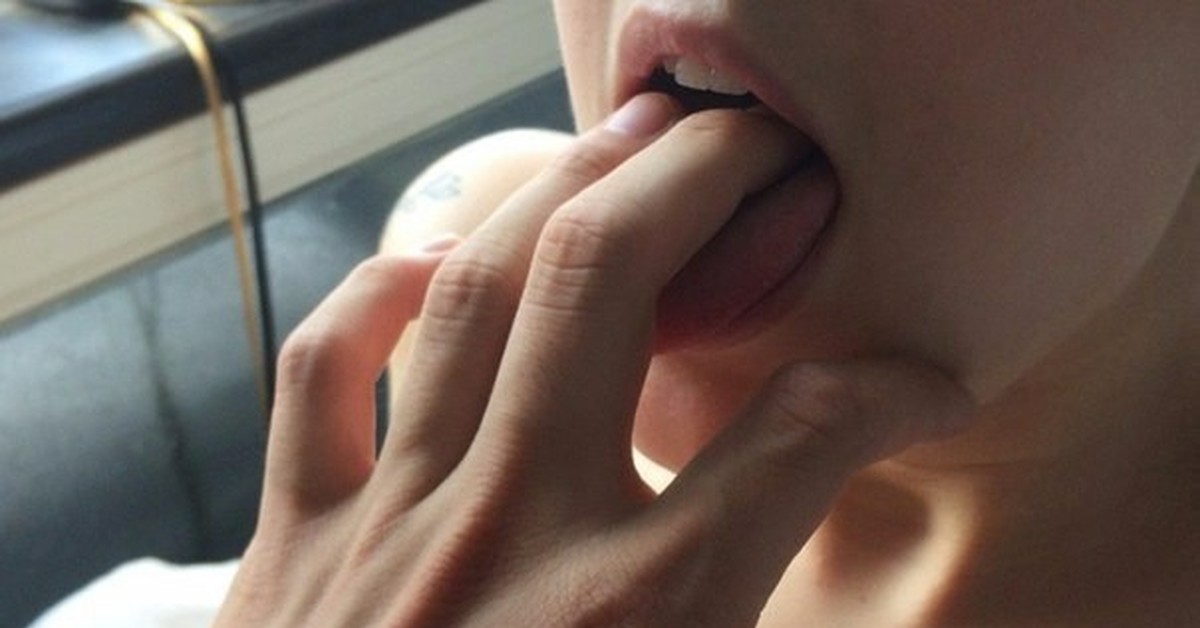
When to Seek Medical Attention for Oral Bruising
While many cases of oral bruising resolve on their own, there are instances where professional medical evaluation is necessary. Consider seeking medical attention if:
- Bruising persists for more than two weeks
- The bruise is accompanied by severe pain or swelling
- You experience recurrent or unexplained bruising
- The bruising is accompanied by other concerning symptoms
- You have a known blood disorder or are taking blood-thinning medications
Early intervention can help prevent complications and ensure proper treatment, especially if the bruising is a sign of a more serious underlying condition.
Diagnosis and Evaluation of Oral Bruising
When evaluating oral bruising, healthcare professionals may employ various diagnostic methods:
Physical Examination
A thorough examination of the oral cavity is typically the first step in diagnosis. The healthcare provider will assess the appearance, size, and location of the bruising or lesions.
Medical History Review
Understanding the patient’s medical history, including any recent injuries, medications, or underlying health conditions, can provide valuable context for diagnosis.

Blood Tests
In some cases, blood tests may be ordered to check for underlying conditions such as blood disorders or vitamin deficiencies.
Imaging Studies
X-rays or other imaging techniques may be used to rule out dental or jaw-related issues that could be contributing to the bruising.
Biopsy
In rare cases where a more serious condition is suspected, a biopsy of the affected tissue may be necessary for definitive diagnosis.
Treatment Options for Oral Bruising and Lesions
The appropriate treatment for oral bruising depends on the underlying cause and severity of the condition. Common treatment approaches include:
Self-Care Measures
For minor cases of oral bruising, self-care measures may be sufficient:
- Applying ice packs to reduce swelling
- Rinsing with saltwater to promote healing
- Avoiding irritating foods and beverages
- Using over-the-counter pain relievers if needed
Dental Interventions
If the bruising is related to dental issues or appliances, a dentist may need to adjust or repair dental work to prevent further irritation.

Medical Treatments
For more severe cases or those related to underlying medical conditions, treatments may include:
- Prescription medications to address infections or blood disorders
- Vitamin supplements to correct deficiencies
- Topical treatments to promote healing of oral lesions
- In rare cases, surgical intervention may be necessary
Preventing Oral Bruising and Maintaining Oral Health
While not all cases of oral bruising can be prevented, there are steps you can take to reduce the risk and maintain overall oral health:
Proper Oral Hygiene
Maintain good oral hygiene practices, including:
- Gentle brushing with a soft-bristled toothbrush
- Careful flossing to avoid injuring gums
- Regular dental check-ups and cleanings
Protective Measures
Take precautions to prevent oral injuries:
- Wear mouthguards during sports activities
- Be mindful when eating hard or sharp foods
- Address any ill-fitting dental appliances promptly
Healthy Lifestyle Choices
Maintain overall health to support oral health:

- Eat a balanced diet rich in vitamins and minerals
- Stay hydrated
- Avoid tobacco use and excessive alcohol consumption
Understanding the Link Between Oral Health and Systemic Diseases
Recent research has highlighted the important connection between oral health and overall systemic health. Oral bruising and lesions can sometimes be indicators of underlying systemic conditions:
Blood Disorders
Conditions such as thrombocytopenia or leukemia can manifest early signs in the oral cavity, including unexplained bruising or bleeding of the gums.
Autoimmune Disorders
Some autoimmune conditions, like lupus or Sjögren’s syndrome, can cause oral lesions or changes in oral tissues.
Nutritional Deficiencies
Vitamin C deficiency (scurvy) or vitamin K deficiency can lead to increased bruising, including in the oral cavity.
Cardiovascular Disease
While not directly causing oral bruising, poor oral health has been linked to an increased risk of cardiovascular disease, highlighting the importance of maintaining good oral hygiene.
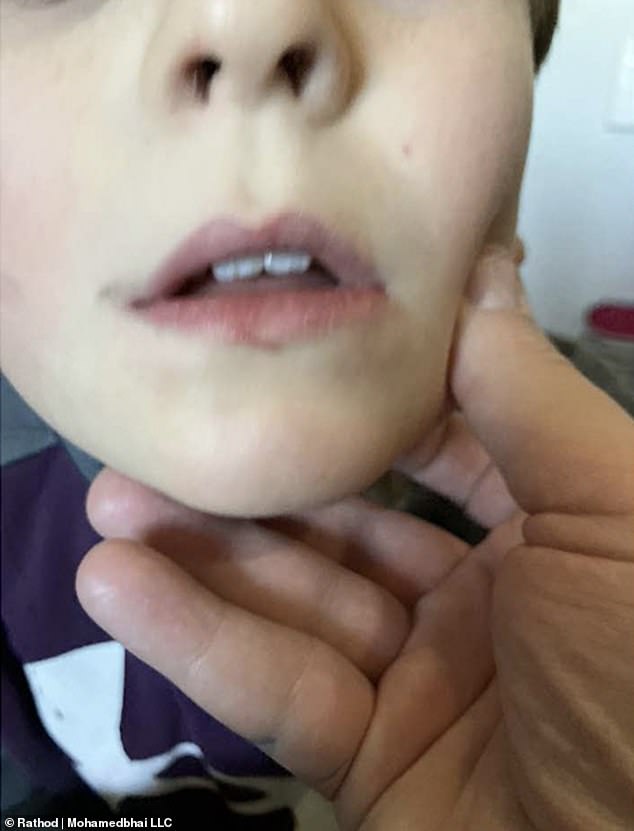
Understanding these connections emphasizes the importance of regular dental check-ups and prompt attention to oral health issues, as they may provide early warning signs of systemic health problems.
Special Considerations for Oral Bruising in Different Age Groups
The causes and implications of oral bruising can vary depending on age:
Children and Adolescents
In younger individuals, oral bruising is often related to:
- Accidental injuries during play or sports
- Orthodontic treatments
- Teething in infants and toddlers
Parents should monitor their children’s oral health closely and ensure proper protective measures during physical activities.
Adults
For adults, common causes of oral bruising include:
- Dental procedures or oral surgeries
- Aggressive oral hygiene practices
- Side effects of certain medications
Adults should be mindful of their oral care routines and communicate any concerns with their healthcare providers.
Elderly Individuals
Older adults may be more susceptible to oral bruising due to:

- Thinning of oral tissues with age
- Increased use of blood-thinning medications
- Potential vitamin deficiencies
Regular dental check-ups and careful monitoring of oral health are particularly important for this age group.
By understanding these age-specific considerations, individuals and caregivers can better address and prevent oral bruising across different life stages.
Causes and Treatment of Bruised Gums — Brightwork Family Dentistry
Have you ever wondered if you could get a bruise on your gums? Gum tissue, just like the rest of the skin on your body, is susceptible to bruising. Falls, bumps, an errant toothbrush – there are many different ways to develop a bruise on your gums, but luckily, most will resolve on their own and are not cause for concern. Read on to see how you might end up with bruised gums, and when you need to seek dental treatment from Richmond Virginia’s family dentists at Brightwork Family Dentistry.
What Causes Bruised Gums
Flossing
It is very possible to have bruised gums from flossing. While it is important to floss daily to take care of your teeth and gums, it is possible to floss too vigorously and cause bleeding or bruising to§ Tooth brushing – A slip of the hand while brushing your teeth can cause you to jab your gum with the blunt end of your toothbrush, resulting in bruised gums after brushing
Accidents
You can encounter a bruise on gum tissue after falling and hitting your face, bumping into something with your mouth, being hit, or other similar injuries
Eating
Chewing sharp or crunchy foods like tortilla chips, using a toothpick, or even just eating off a fork – with one wrong chew, you can end up with a painfully bruised gum
Dental appliances
If you have braces, aligners, a retainer, or another dental appliance, it’s possible that a temporarily ill-fitting device might irritate or bruise your gums. In this case, contact your dental or orthodontic office to have the appliance adjusted
In this case, contact your dental or orthodontic office to have the appliance adjusted
Teething
Be mindful if your baby’s gum looks bruised during teething. As a baby’s teeth begin to erupt through the gums (typically, at between six months to one year of age), the gums will be extremely tender and may become bruised where the tooth is coming in – especially with vigorous chewing on teething aids. Occasionally, a baby may even develop a dark, blood-filled cyst at the site of the erupting tooth, called an eruption hematoma, which will typically resolve on its own once the tooth comes in. If you are worried about bruising on your baby’s gums, you can request an appointment with our team of Richmond pediatric dentists at Brightwork
Thrombocytopenia
This condition is caused by a low platelet count, in which the body does not have enough platelets to form blood clots. Among other symptoms, sufferers often experience bruised and bleeding gums
What Does It Mean When Your Gums Look Bruised?
Bruised gums might be purple in color like a typical bruise on your body, but they can also appear dark brown, red, or even black. The bruise might be painful, or it might simply be a discoloration. The good news is that most bruises on the gum will resolve on their own, just like any other bruise.
The bruise might be painful, or it might simply be a discoloration. The good news is that most bruises on the gum will resolve on their own, just like any other bruise.
However, it’s important to know how you got the bruise – if one appears for seemingly no reason, you should consult with your dentist immediately. And even if you do know the cause, make sure to visit Brightwork Family Dentistry in Richmond VA to check for any bruise that doesn’t seem to be healing or that causes significant pain. We can help evaluate your bruised gum situation and explore strategies to enhance your dental health.
If you’re concerned about a change to your gums, schedule an appointment with Richmond Virginia’s family dental experts at Brightwork Family Dentistry. Learn how a consultation with Dr. Crowley or Dr. Iachini can provide the best bruised gum treatment. We’re ready to help answer any questions you have.
Oral lesions presenting as an early sign of acute leukaemia
Article Text
Article menu
- Article
Text - Article
info - Citation
Tools - Share
- Rapid Responses
- Article
metrics - Alerts
Oral lesions presenting as an early sign of acute leukaemia
Free
- Zacharias Vourexakis
- Department of Otolaryngology/Head and Neck Surgery, University Hospital of Geneva, Geneva, Switzerland
- Correspondence to Dr Zacharias Vourexakis, zkvourexakis{at}yahoo.
 com
com
http://dx.doi.org/10.1136/bcr-2014-205100
Statistics from Altmetric.com
Request Permissions
If you wish to reuse any or all of this article please use the link below which will take you to the Copyright Clearance Center’s RightsLink service. You will be able to get a quick price and instant permission to reuse the content in many different ways.
Description
A middle-aged patient with no major comorbidity presented to the emergency department with severe odynophagia and painful oral lesions of 3 days’ duration, and pronounced fatigue along with unusual recurrent bruising for almost a month.
Inspection of the oral cavity (figures 1 and 2) revealed ecchymoses on the hard palate and the floor of the mouth (blue arrows), ulcerations (white arrows) and pallor of the oral mucosa. The work-up included a complete blood count, karyotyping, microscopic examination and molecular biology studies of bone marrow biopsies. Severe pancytopenia (5 platelets/nL, 1.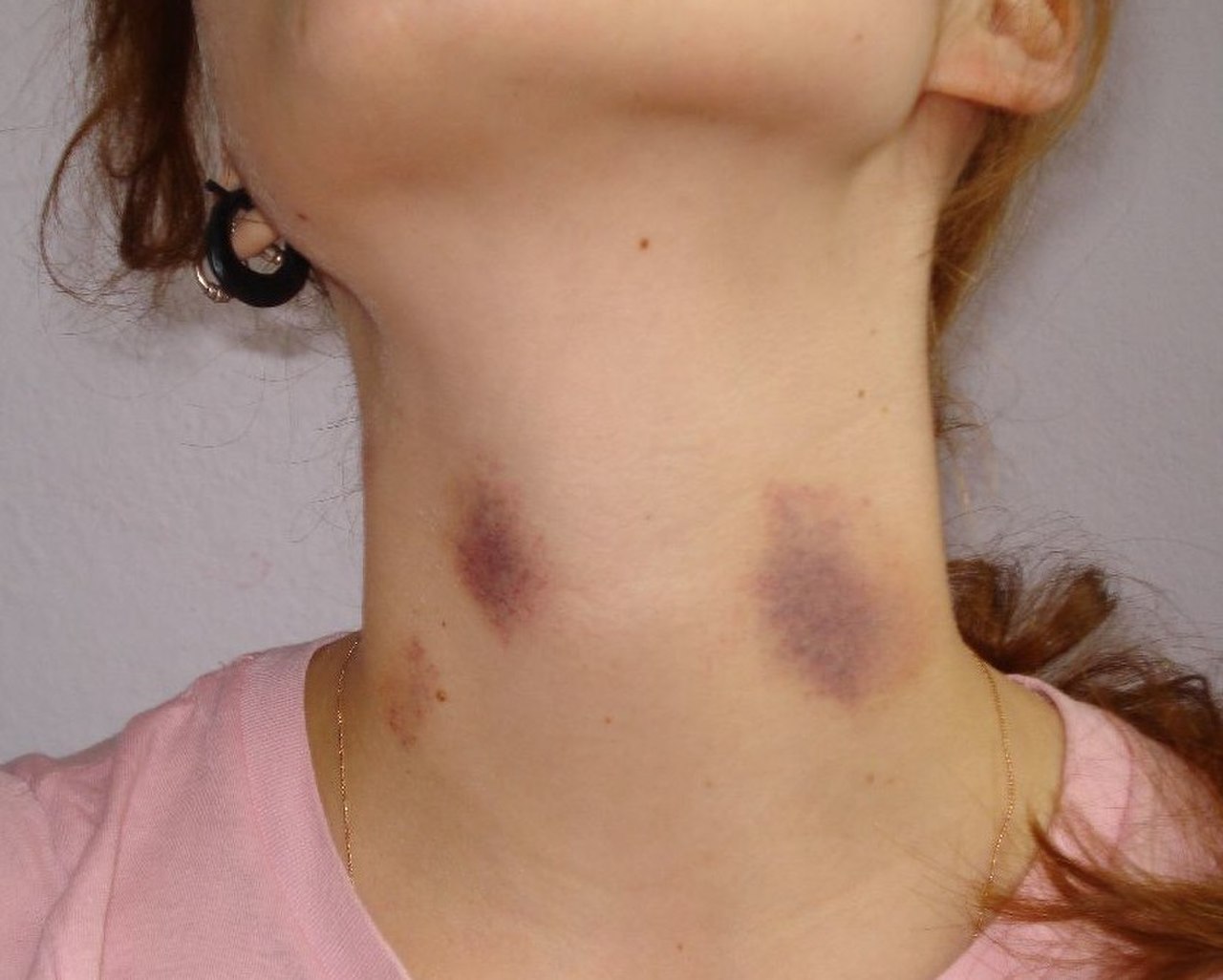 1 leucocytes/nL and 22% haematocrit) along with a t(15;17)(q24;q21) translocation were identified and findings were all compatible with the diagnosis of acute promyelocytic leukaemia (APML). Despite appropriate treatment, the patient died from intracranial haemorrhage occurring 3 weeks after initial admission to the hospital.
1 leucocytes/nL and 22% haematocrit) along with a t(15;17)(q24;q21) translocation were identified and findings were all compatible with the diagnosis of acute promyelocytic leukaemia (APML). Despite appropriate treatment, the patient died from intracranial haemorrhage occurring 3 weeks after initial admission to the hospital.
Figure 1
Ecchymosis (blue arrow) and mucosal erosion (white arrow) on the hard palate.
Figure 2
Ecchymosis (blue arrow) and ulceration (white arrow) on the floor of the mouth.
At initial presentation of leukaemia, oral manifestations may be present in 2/3 of all patients.1 None of these lesions is specific for the disease. It is the simultaneous presence of different types of oral lesions (haematomas, ulcers, gingival hypertrophy, opportunistic infections, etc) that should alert the physician. As APML represents one of the most curable but also most aggressive subtypes of acute leukaemia when left untreated,2 rapid and accurate diagnosis are crucial in its management. The treatment’s efficacy increases drastically with the association of anthracycline-based chemotherapy regimens to a vitamin A derivative, the all-trans retinoic acid, with or without arsenic trioxide. Nowadays, the 5-year disease-free survival of properly treated patients with APML may be well above 75%.3 Nevertheless, life-threatening coagulopathy and lethal bleeding still represent a major risk for these patients.
The treatment’s efficacy increases drastically with the association of anthracycline-based chemotherapy regimens to a vitamin A derivative, the all-trans retinoic acid, with or without arsenic trioxide. Nowadays, the 5-year disease-free survival of properly treated patients with APML may be well above 75%.3 Nevertheless, life-threatening coagulopathy and lethal bleeding still represent a major risk for these patients.
Learning points
At initial presentation, two-thirds of patients with leukaemia have non-specific lesions of the oral mucosa.
The simultaneous presence of different types of oral lesions (ulcers, haematomas, gingival hypertrophy, opportunistic infections, etc) should alert the physician for the possibility of an underlying disease and a haematological malignancy should be considered in the differential diagnosis.
Acute promyelocytic leukaemia is a very aggressive form of leukaemia related to a characteristic acquired somatic mutation; it is highly curable when proper chemotherapy is associated to all-trans retinoic acid early in the course of the disease.

References
- ↵
- Stafford R,
- Sonis S,
- Lockhart P, et al
. Oral pathoses as diagnostic indicators in leukemia. Oral Surg Oral Med Oral Pathol 1980;50:134–9. doi:10.1016/0030-4220(80)90200-5
- ↵
- Dores GM,
- Devesa SS,
- Curtis RE, et al
. Acute leukemia incidence and patient survival among children and adults in the United States, 2001–2007. Blood 2012;119:34–43. doi:10.1182/blood-2011-04-347872
- ↵
- Wang ZY,
- Chen Z
. Acute promyelocytic leukemia: from highly fatal to highly curable. Blood 2008;111:2505–15. doi:10.1182/blood-2007-07-102798
View Abstract
Footnotes
Read the full text or download the PDF:
Subscribe
Log in using your username and password
For personal accounts OR managers of institutional accounts
Username *
Password *
Forgot your log in details?Register a new account?
Forgot your user name or password?
Hematoma in dentistry – dental index French Dental Clinic
Hematoma (hematoma in dentistry) (from other Greek blood ōma) – accumulation of blood in soft tissues. It appears when blood vessels are ruptured or damaged due to injuries, falls, aggressive dental interventions, bruises, and is not always a sign of an inflammatory process.
It appears when blood vessels are ruptured or damaged due to injuries, falls, aggressive dental interventions, bruises, and is not always a sign of an inflammatory process.
What a hematoma looks like
A hematoma is a bloody formation under the skin, similar to a simple bruise, the color of the lesion can vary from reddish to bluish and yellow. Small hematomas are able to resolve on their own without medical intervention.
With large bruises, an inflammatory process may develop, accompanied by swelling of the damaged area, pain. A general malaise may also develop, up to a rise in body temperature.
Types of hematomas
Hematoma in dentistry is classified depending on location (subcutaneous hematoma, extensive hematoma), relationship to the lumen of the blood vessel (pulsating, not pulsating), the state of the outflowing blood (clotting, infected, festering).
Subcutaneous hematoma is formed as a result of local hemorrhages in the subcutaneous tissue. The intensity of the shade of the hematoma depends on the depth of the localization of the bruise and the volume of the outflowing blood. As hemoglobin is resorbed and destroyed, the hematoma changes color to greenish, yellow-green, yellow. The formation of a subcutaneous hematoma is accompanied by pain, possibly an increase in temperature, swelling of the tissues.
The intensity of the shade of the hematoma depends on the depth of the localization of the bruise and the volume of the outflowing blood. As hemoglobin is resorbed and destroyed, the hematoma changes color to greenish, yellow-green, yellow. The formation of a subcutaneous hematoma is accompanied by pain, possibly an increase in temperature, swelling of the tissues.
Extensive hematoma occurs as a result of rupture of large vessels; hematoma with signs of suppuration.
Causes and predisposing factors for hematoma formation
- Impaired vascular permeability
- Increased fragility of the vascular wall
- Impaired blood clotting
- Reducing the body’s defenses due to exhaustion, chronic disease, old age
- Immune system disorders
- Damage caused by dental instruments
- Pathologies of bite
- Sharp teeth
- Bridges and removable dentures
- Surgery
- Extraction of teeth
- Damage to the vessel during the administration of anesthesia
- Hypertension
- Displacement of the neurovascular bundle of the lower jaw
- Domestic injuries
- Abrupt administration of a large amount of anesthetic
Pathogenesis
The occurrence of hematoma in dentistry is usually caused by mechanical trauma to the oral cavity – an unsuccessful operation, extraction of teeth, injection of anesthesia. Domestic injuries are possible, people with poor blood clotting, the elderly are especially susceptible to this disease.
Domestic injuries are possible, people with poor blood clotting, the elderly are especially susceptible to this disease.
Stages of development of hemotoma
- Red hematoma – hemorrhage into the surrounding tissues of erythrocytes. Rupture of blood vessels, thrombosis.
- Blue hematoma (2-3 days) – venous congestion, changes in uniform elements.
- Green hematoma (day 4-5) – formation and release of hemasiderin.
- Yellow hematoma (6-7 days) – resolving therapy is recommended.
- During the process for more than a month, the development of ulcers, erosion is possible.
Symptoms
- Increasing body temperature
- Pain on palpation
- Spontaneous throbbing pain
- Tissue sealing
- Tissue swelling
- Discoloration of damaged skin
- Mucosal edema
Treatment of hematoma
If a hematoma of dental origin occurs, self-treatment is not allowed. It is forbidden to heat, rinse and other folk remedies. This can lead to serious complications that require surgical intervention to eliminate. With treatment prescribed by a doctor, using prescribed medications, the hematoma disappears after 3-4 days.
It is forbidden to heat, rinse and other folk remedies. This can lead to serious complications that require surgical intervention to eliminate. With treatment prescribed by a doctor, using prescribed medications, the hematoma disappears after 3-4 days.
Hematoma of traumatic origin (subcutaneous hematoma) .Conservative treatment – cooling the damaged area, applying a compress to narrow the lumen of the vessels, using analgesics and physiotherapy.
Extensive hematoma. Treatment is performed by puncture, by applying a pressure bandage. If repeated bleeding occurs, the hematoma is opened, the bleeding vessel is ligated, or a vascular suture is applied. With suppuration of the hematoma, it is immediately opened and drained.
what is it and what to do with it – useful information, LeaderStom dentistry in Moscow
The mucous membrane of the oral cavity is an important component of the human body, which consists of different tissues that perform a protective, absorption and excretory function. It is involved in thermoregulation, is responsible for the perception of the taste of food. Therefore, it is necessary to carefully monitor the condition of the oral mucosa and, if there are changes in the integrity of the epithelium, consult a doctor.
It is involved in thermoregulation, is responsible for the perception of the taste of food. Therefore, it is necessary to carefully monitor the condition of the oral mucosa and, if there are changes in the integrity of the epithelium, consult a doctor.
Characteristics of the blood bladder on the oral mucosa
The mucous membrane protects the entire body from the negative effects of the environment, from harmful microorganisms, various kinds of pollution, and also has a fairly high level of regeneration. If blood bubbles regularly appear on the oral mucosa, then this signal should be taken seriously and action taken.
A bloody ball in the mouth is a hematoma (bruise), which is characterized by the accumulation of blood in a certain place in the oral cavity. The appearance of bloody vesicles is a kind of hemorrhage that occurs as a result of trauma to the capillaries and thin vessels of the mucosa.
A bubble on the mucous membrane may be with a clear serous fluid without the presence of blood. This means that the vessels were not damaged, and the resulting wound is superficial. Such bubbles on the mucous membrane heal much faster. The presence of blood in the bladder indicates a deep injury and a longer period of its healing, blood resorption.
This means that the vessels were not damaged, and the resulting wound is superficial. Such bubbles on the mucous membrane heal much faster. The presence of blood in the bladder indicates a deep injury and a longer period of its healing, blood resorption.
Read also
Blood formations in the mouth. Their causes and treatments.
Why fistula occurs on the gums and how to treat it
Why did a growth appear on the tongue, ways to remove papilloma
The main causes of a blood blister
The general condition and integrity of the oral mucosa usually indicates the level of health of the body. Often, by examining the appearance of the oral mucosa and blisters, the doctor makes the final diagnosis. After all, the symptoms of most infectious, bacterial, chronic, as well as acute processes that occur in the body are associated with a change in the integrity and color of the oral mucosa. Therefore, it is important to understand the main causes that provoke the appearance of blisters with blood in the mouth.
Blood blisters are distinguished by the place of their occurrence – on the tongue, under the tongue, on the cheek. They can occur as a result of an injury or be a signal of the presence of a serious illness in the body. Multiple blood blisters on the oral mucosa occur with stomatitis, a disease of the gastrointestinal tract, and disorders in the endocrine system.
The cause of the sudden appearance of a blood bubble in the mouth is damage to the mucosa.
The following types of damage to the oral cavity are distinguished:
- mechanical injury. May be caused by objects, solid food, cheek biting;
- chemical injury. It occurs due to the use of spicy, salty foods, contact with the mucous membrane of chemicals. This irritates the delicate oral mucosa and injures it;
- thermal injury. Their appearance provokes too cold or hot food, drinks.
Mechanism of formation of a blood bubble on the oral mucosa
Blood blisters in the mouth in most cases are not life-threatening.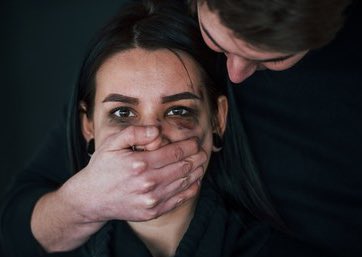 They are formed as a result of mechanical damage to the mucosa. When a microtrauma occurs, an attack of harmful microorganisms occurs on the damaged area.
They are formed as a result of mechanical damage to the mucosa. When a microtrauma occurs, an attack of harmful microorganisms occurs on the damaged area.
After that, a number of response reactions are activated in the human body:
- The immune system is activated. Monocytes and leukocytes, as well as macrophages, instantly arrive at the damaged site, attacking the harmful pathogen and quickly destroying it.
- Immune cells die. This is a signal to other cells and substances are released in the affected area that are mediators of inflammation of the mucous membrane – serotonin, histamine and bradykinin.
- These substances cause a strong spasm of the circulatory system and the outflow of blood is difficult. After the spasm is relieved, all the accumulated blood immediately flows to the site of inflammation. It moves at high speed and under pressure. In the mouth, the mucosal detachment occurs, and a bubble appears with bloody filling.
Blisters in the mouth
A blood bubble in the mouth is only part of the body’s defense reaction and goes away on its own within a week. If this does not happen, then it is necessary to seek the advice of a doctor in order to exclude serious diseases of the body and neoplasms. He will be able to make an accurate diagnosis by making a thorough examination, having studied the data of clinical analyzes and histology. After that, the doctor will prescribe the correct treatment.
If this does not happen, then it is necessary to seek the advice of a doctor in order to exclude serious diseases of the body and neoplasms. He will be able to make an accurate diagnosis by making a thorough examination, having studied the data of clinical analyzes and histology. After that, the doctor will prescribe the correct treatment.
The treatment of a blood bladder in the mouth is closely related to the cause of its occurrence and therefore the treatment depends on several important factors:
- amount of surface damage;
- the degree of filling with serous fluid;
- the nature of the contents of the blood bladder;
- location.
The volume and nature of the damaged surface is important when prescribing the treatment of a bloody bladder in the oral cavity. After all, the larger the volume of the blood bladder, the worse it heals and resolves. Treatment of a large bladder with blood can develop into a surgical intervention from a conservative one. Small blood bubbles resolve quickly and do not require special treatment.
Small blood bubbles resolve quickly and do not require special treatment.
A blood bladder on the oral mucosa must be carefully examined to exclude hemangioma and vascular tumor. This can be done by the doctor when examining the oral cavity. A hemangioma is sometimes left without much treatment if it doesn’t grow. With intensive growth, it should be removed surgically.
Many bloody blisters in the mouth can be associated with syphilis disease, sometimes pemphigus. Small red vesicles on the tongue, under it or on the side may indicate the presence of glossitis – inflammation of the surface of the tongue, which is caused by harmful microorganisms. Treatment will consist of treating and rinsing the mouth with antiseptic solutions and eliminating the disease, which has become the main cause of blood blisters.
It is not necessary to treat a bloody bladder in the mouth if it is single and does not bother a person. If it interferes, then the doctor performs a puncture after a thorough examination and diagnosis.

 com
com